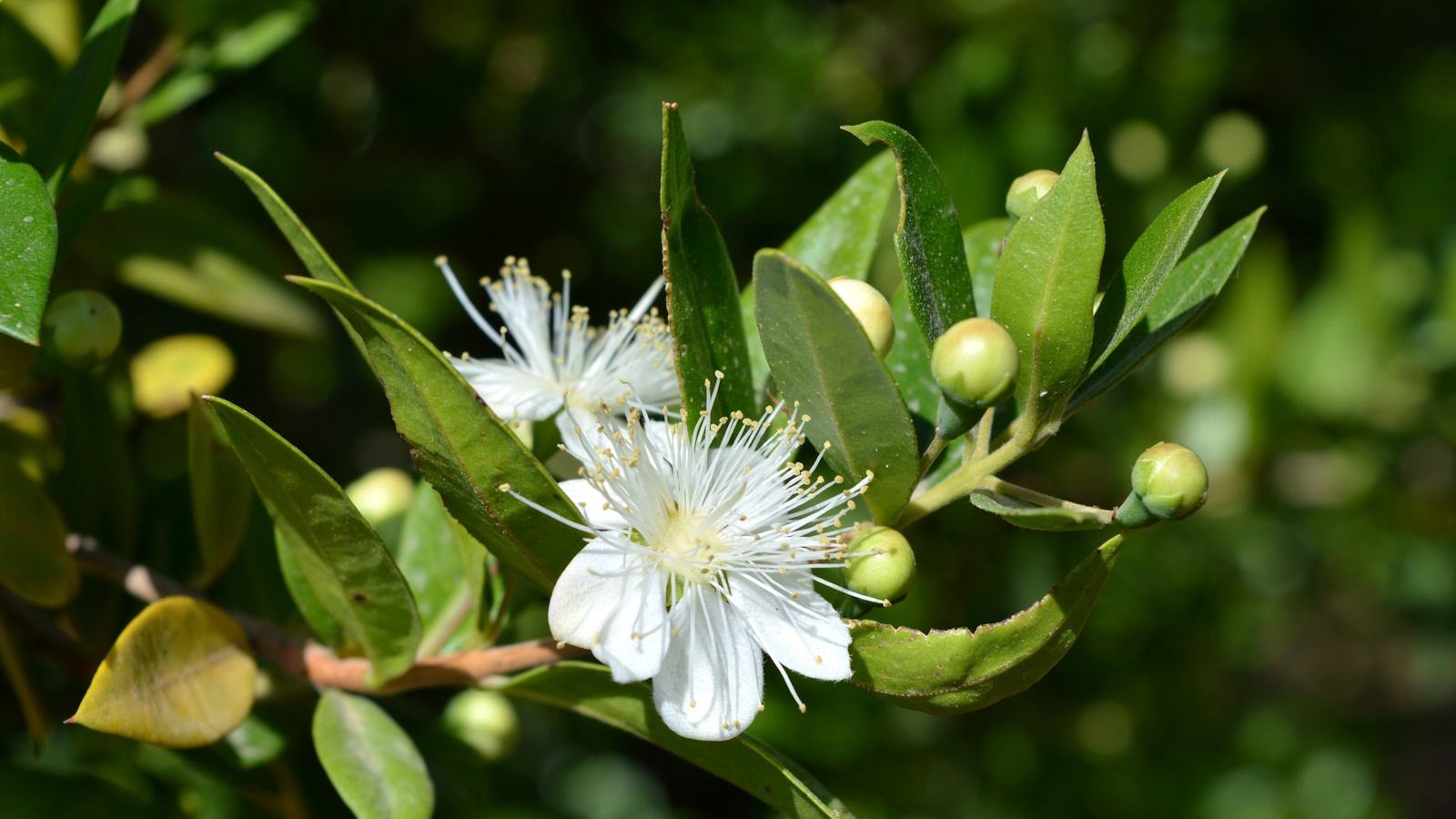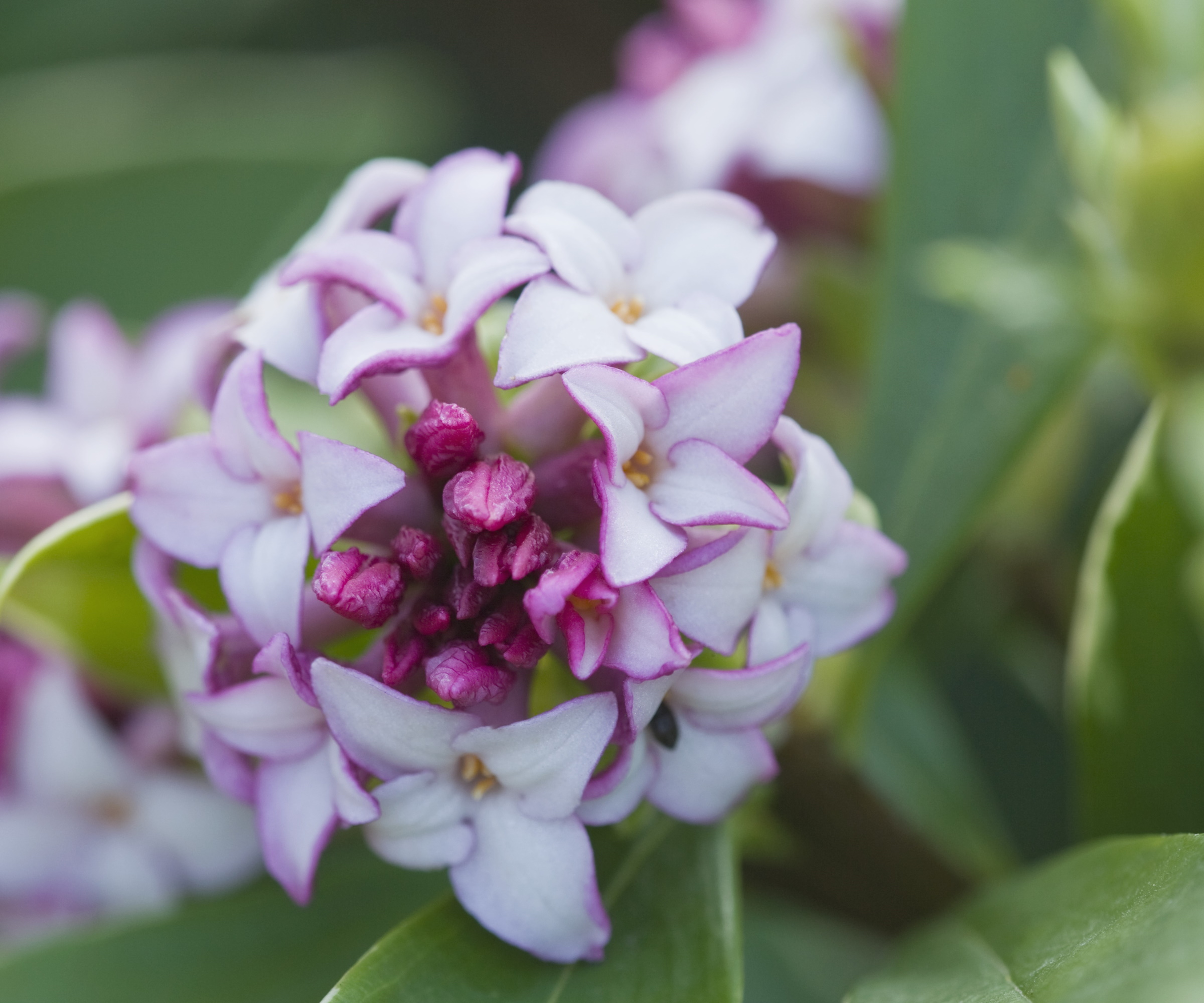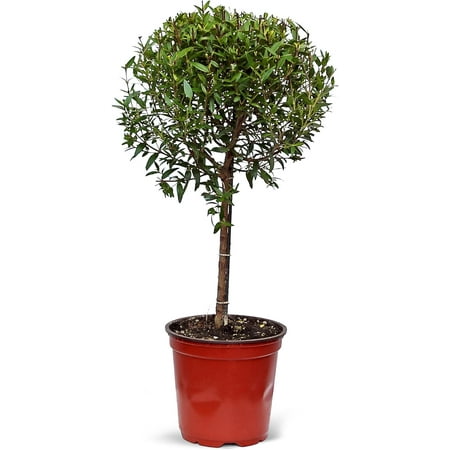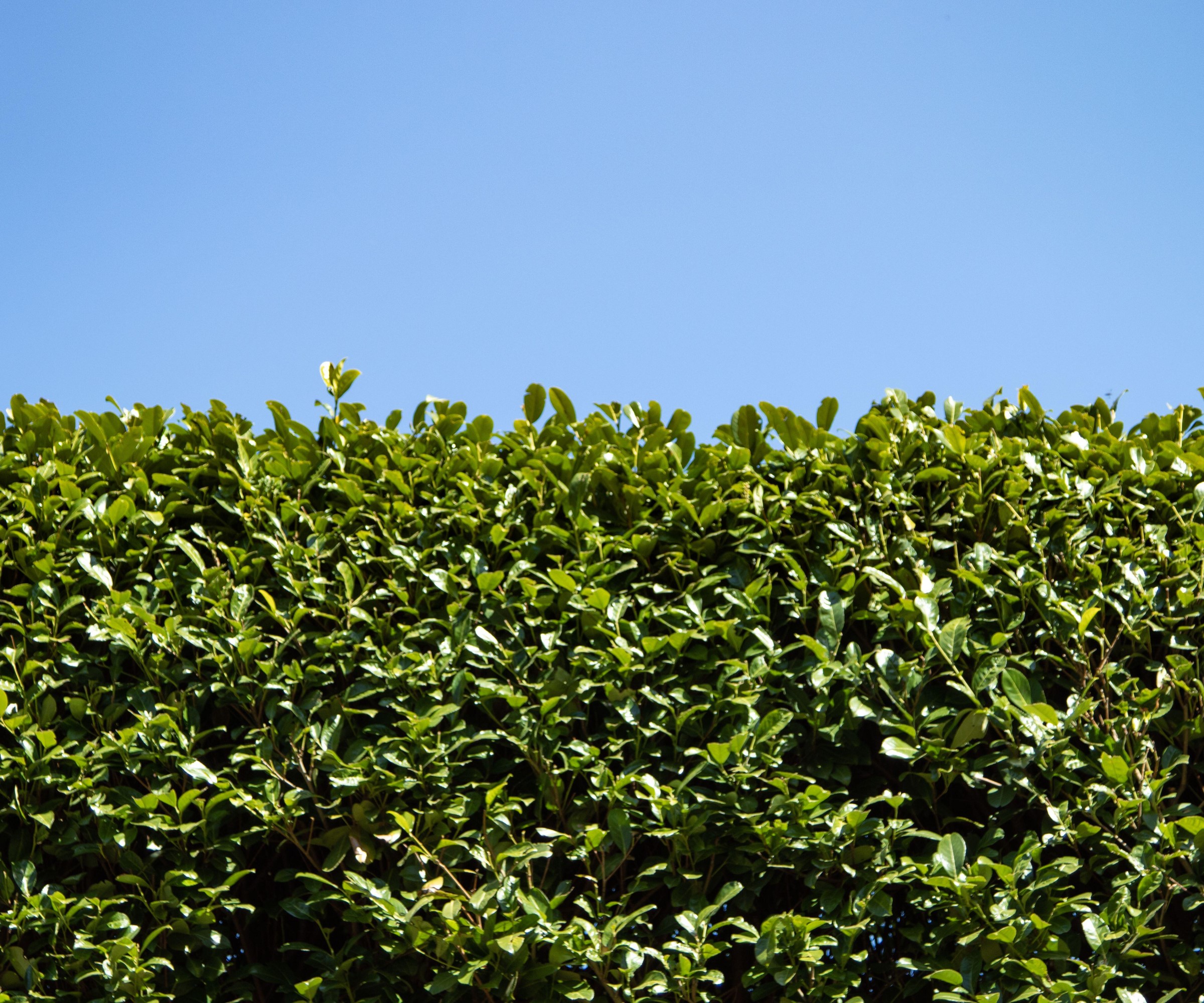Best fragrant evergreens – 5 perfumed plants for a year-round sensory garden
Fragrant evergreens can add a sensory element to any plot


Evergreens are the unsung heroes of garden borders. They can be versatile and resilient, adding greenery to boundaries, containers and flower beds even during the cold and dark months of winter.
There are many evergreen options to choose from, including the ever-popular yew, camellias and arborvitae. However, a select few evergreens are also scented - and who wouldn't want to fill their plot with heady floral fragrance? These fragrant evergreens prove that useful can be beautiful, maximizing sensory interest at all times of the year.
So, if you are looking for one or two of the best fragrant hedge plants or evergreen statement shrubs, we have picked five perfect options for creating a perfumed paradise.

Osmanthus x Burkwoodii produces scented white blooms during late summer and early fall
Best fragrant evergreens
Evergreens are vital plants in any garden border. Not only do they provide year-round greenery, but landscaping with evergreens can help to soften boundaries, guarantee privacy and also provide habitat for local wildlife. Here, we reveal five of the easiest evergreen trees and shrubs that have fragrant flowers and foliage, thereby adding a meditative, sensory element to your yard.
1. Daphne

Daphne is well-known for producing a heady floral fragrance from spring
Native to Asia, fragrant Daphne shrubs are today cultivated worldwide. There are over 50 species of Daphne, and many of these are evergreen, producing fragrant four-petalled flowers, as can be seen above.
'Daphne is one of the best fragrant evergreens, helping to create a colorful but calm space wherever they are planted,' says Mike Murphy, garden expert and owner at You Had Me At Gardening. 'While it will vary on the exact variety, most can be grown from US hardiness zone 4 plus, although in cooler zones, you might experience some leaf drop depending on the winter weather.
'Daphnes do best in a sheltered, sunny spot in the garden border,' Mike adds. 'Be warned that these shrubs are slow growing, though, often only producing a few inches of growth per season to eventually reach their mature size, usually around 3 or 4 feet tall. For this reason, it is best to purchase as large a plant as you can afford.'
For a variegated evergreen option with perfumed pink blooms, try growing Daphne odora 'Rogbret', available from Nature Hills.

Mike grew up gardening with his parents and grandparents. He enjoys his backyard orchard of dwarf fruit trees, raspberry and blackberry patches, and raised garden boxes. In addition to his perennials, Mike enjoys sprouting new fruit and vegetable seeds every spring.
2. Osmanthus

Scented osmanthus can be used as both hedge plants or as statement shrubs
Native to eastern Asia, fragrant osmanthus shrubs are another evergreen option that can add height and structure to garden borders. As a former professional gardener, I have grown Osmanthus fragrans and Osmanthus x burkwoodii, both of which are perfumed options I can highly recommend. Osmanthus live starter plants are available from Walmart.
Most osmanthus shrubs can be grown between US hardiness zones 7 to 10, producing attractive, holly-like leaves with a slightly toothed edge, as well as fragrant blooms from late summer. At maturity, they can reach up to 20 feet tall, but as with other evergreens, osmanthus tends to be slow-growing and well-behaved, only requiring clipping once every few years.
Osmanthus aquifolium, otherwise known as devilwood, can be trained to grow as a small-sized multi-stem tree in a pot with a neatly clipped topiary canopy. Ideal if you enjoy modern cottage garden ideas that are shapely, floral and fragrant.

This Myrtus Communis, or common myrtle plant, has already been shaped, instantly adding a smart look to your pot displays.
3. Portuguese laurel

Portuguese laurel is a useful boundary plant with dainty white scented blooms
Growing best from US hardiness zone 6, Prunus lusitanica, or the Portuguese laurel, is another fragrant evergreen to consider. Often used as low-maintenance hedge plants, Portuguese laurel can also add a fragrant twist when the white flowers open in summer. For this reason, it is a good idea to position them near a path or entranceway to your home, for a scented welcome to greet visitors.
Native to the Iberian Peninsula, Portuguese laurel showcases lush evergreen glossy leaves that will tolerate most soil conditions and light situations. They make for ideal plants even in dry shade, which can often prove challenging when deciding on species to grow.
Although similar to cherry laurel, I think the Portuguese laurel has superior foliage. What's more, it really is low-maintenance, requiring one trim per year in late summer to keep it under control.
Evergreen laurel plants are available from Amazon.
4. Myrtle

Evergreen myrtle shrubs produces unusual white blooms from summer
Myrtus communis, or common myrtle, is undeniably one of the prettiest evergreen trees. Native to the Mediterranean, this aromatic shrub has evergreen leaves but is perhaps best known for its sweetly scented flowers that emerge in summer. Each flower produces lots of long, curling stamens, for an unusual and impactful look.
As a native to warmer climates, this shrub prefers sunny, sheltered yards, doing best from US hardiness zone 8 to zone 10 in moist but well-drained soil. At maturity, the plant will reach no bigger than six feet tall, making it an ideal option for a pot display.
Myrtle communis seeds are available from Amazon.
5. Artemisia

With silver foliage, the herbal evergreen is perfect for a cool, calm look
While not as well known as some of the other evergreen shrubs, artemisia is a unique silver-leaved species to consider. Generally speaking, artemisia plants are only evergreen in warmer climates, although in a sheltered spot in the yard, for example against a sunny wall, they can retain much of their aromatic foliage through the winter.
Growing to a height of four to five feet, artemisia shrubs are a good choice for gardeners from zone 8 plus. Although these plants with silver foliage are undoubtedly attractive, some species are considered invasive plants in the US. Artemisia vulgaris, or mugwort, for example, is considered an invasive weed in much of the Midwest.
Fortunately, there are many non-invasive varieties to choose from, including southernwood, Artemisia abrotanum, which has beautiful silver-white foliage that shines in the sunlight. Artemisia live plants are available from Amazon.
FAQs
What are the best fragrant evergreens to grow on a sunny balcony?
For a fragrant evergreen on a sunny balcony, stick with silver-leaved plants, which will be able to handle strong sunshine and dry weather during the summer. Artemisia is a good option, but also santolina is another plant that could work well in pots and remains evergreen in mild zones and warmer climates. Santolina live plants are available from Walmart.
If you are looking for native plants that are fragrant evergreens, why not grow juniper? With scented needles, juniper can add an aromatic touch to your borders. For a low-growing option, learn how to grow creeping juniper, Juniperus horizontalis, which is native to the cooler regions of North America.
Sign up to the Homes & Gardens newsletter
Design expertise in your inbox – from inspiring decorating ideas and beautiful celebrity homes to practical gardening advice and shopping round-ups.

Thomas is a Content Editor within the Gardens Team at Homes and Gardens. He has worked as a professional gardener for both public spaces and private estates, specializing in productive gardening, growing food and flowers. Trained in Horticulture at the Garden Museum, he has written on gardening and garden history for various publications, including The English Garden, Gardens Illustrated, Hortus, The London Gardener and Bloom. He has co-authored a Lonely Planet travel book, The Tree Atlas, due out in 2024.
-
 Kourtney Kardashian's cloud-like chair taps into 2025's most interesting furniture trend – it has the unique ability to improve spatial flow in any room
Kourtney Kardashian's cloud-like chair taps into 2025's most interesting furniture trend – it has the unique ability to improve spatial flow in any roomAn accent chair highlights the beauty of the natural world in the socialite's living room – experts explain why it's trending and how to recreate the look
By Sophie Edwards
-
 Little Greene paint colors in real homes – 19 rooms decorated by designers with tried and true paint shades and wallpapers
Little Greene paint colors in real homes – 19 rooms decorated by designers with tried and true paint shades and wallpapersGain fresh paint color inspiration with these timeless Little Greene shades, from rich greens to elegant neutrals
By Emily Moorman
-
 Best plants for a chicken run – 7 fragrant and floral plants for happy hens and beautiful coops
Best plants for a chicken run – 7 fragrant and floral plants for happy hens and beautiful coopsYour chicken run can be every bit as beautiful as your own garden, so long as you do your research first
By Kayleigh Dray
-
 How to grow lupine – expert advice on growing this dramatic and vibrant cottage garden flower
How to grow lupine – expert advice on growing this dramatic and vibrant cottage garden flowerVibrantly colored flower stalks make swathes of lupines a sight to see in meadows and cut flower gardens alike
By Ellen Wells
-
 How to grow tree peonies in pots – for a show-stopping shrub that will thrive in partially shaded yards
How to grow tree peonies in pots – for a show-stopping shrub that will thrive in partially shaded yardsWith large, saucer-like blooms, tree peonies are the ultimate flowering shrub
By Thomas Rutter
-
 Can you revive woody rosemary plants? Expert pruning advice from a professional gardener to save old, leggy herbs
Can you revive woody rosemary plants? Expert pruning advice from a professional gardener to save old, leggy herbsWith the right pruning approach, old and woody rosemary plants can be brought back to life
By Thomas Rutter
-
 Your hydrangeas will flourish with bigger blooms and healthier growth thanks to this 1 natural material that is easy to use
Your hydrangeas will flourish with bigger blooms and healthier growth thanks to this 1 natural material that is easy to useDiscover why you should be using leaf mold to mulch hydrangeas
By Drew Swainston
-
 5 fast-growing tiny flowers – expert recommendations to fill your pots and borders with color in record time
5 fast-growing tiny flowers – expert recommendations to fill your pots and borders with color in record timeThese fast-growing tiny flowers prove that miniature can also be marvelous
By Thomas Rutter
-
 How to grow sassafras – for a low-maintenance native tree that can even be planted in shady yards
How to grow sassafras – for a low-maintenance native tree that can even be planted in shady yardsFor an easy-to-grow North American tree, you will not find much better than sassafras
By Thomas Rutter
-
 How to grow crepe myrtle in pots – and transform even the smallest of yards with dazzling flowers this summer
How to grow crepe myrtle in pots – and transform even the smallest of yards with dazzling flowers this summerGrowing crepe myrtles in pots will inject splashes of brilliant color into your outside space
By Thomas Rutter

